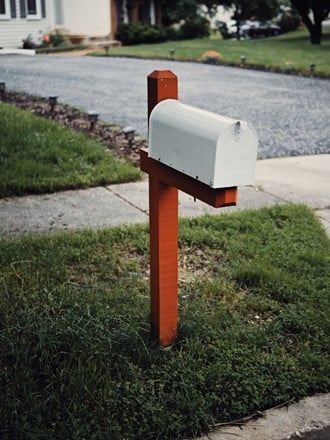It’s easy to believe that the only effective way to reach potential customers is through online platforms these days. Social media ads, search engine optimization, and influencer campaigns dominate discussions about engagement. Yet, not every audience can be reached through digital channels alone.
Tangible, printed messages remain one of the most effective ways to break through digital clutter and form genuine connections. Unlike emails that can be ignored or filtered, materials delivered straight into someone’s hands bypass online barriers and create memorable experiences. Direct mail companies have refined these strategies to help brands stand out, making it possible for businesses to connect in a more personal and lasting way. For organizations looking to rise above the competition, engaging audiences beyond the screen can be a true differentiator.
Escaping the Algorithm Trap
Algorithms dictate what people see online. Whether it’s social media feeds or search engine results, businesses are constantly competing for visibility against competitors, paid advertisers, and the platforms’ own shifting priorities. Even loyal followers may never see your updates if the algorithm doesn’t favor them.
Offline communication doesn’t rely on digital gatekeepers. A well-crafted printed piece delivered to a person’s home or office lands directly in their hands, no bidding wars, no audience restrictions, no hidden filters. This direct line of communication ensures your message is received, increasing the likelihood it will be noticed and considered.
Building Trust Through Tangibility
In a world flooded with screens, physical communication feels refreshingly authentic. People are bombarded daily with pop-ups, spam, and digital ads, many of which are ignored or dismissed as intrusive. But when something arrives in a physical form, it carries more weight. It feels intentional, personalized, and permanent.
The tactile experience of holding a message, the feel of the paper, the design, the colors, stimulates the senses in a way no digital ad can replicate. This sensory engagement creates a stronger emotional connection, reinforcing brand recognition and trust. Studies have shown that people are more likely to remember a printed piece than a digital one, making it a powerful way to leave a lasting impression.
Personalization That Resonates
Digital personalization often feels hollow. Receiving an email with your first name or seeing an ad based on your browsing history doesn’t always inspire trust; in fact, it can sometimes feel invasive.
By contrast, physical communication feels thoughtful and deliberate. A custom-designed piece that acknowledges a customer’s preferences, location, or needs feels far more personal. It shows effort and care, especially when combined with creative touches like handwritten notes, unique packaging, or tailored imagery.
This level of personalization strengthens relationships and makes customers feel valued, not just like another data point in a spreadsheet.
Standing Out in the Attention Economy
Online, attention is fleeting. Ads compete with notifications, emails, endless scrolling, and dozens of other distractions. Most online impressions last only seconds before they disappear into the digital ether.
Physical communication, however, commands attention in a quieter, less crowded environment. A piece arriving at someone’s home or office often stands alone, free from the chaos of a feed. Recipients take more time to engage with it, especially if it’s visually appealing or creatively designed. This gives businesses a unique opportunity to tell their story in a way that resonates longer.
Longevity Beyond the Screen
Digital ads vanish quickly. Once someone scrolls past, the message is gone, often forgotten within moments. Physical communication, on the other hand, has staying power.
A beautifully designed brochure, postcard, or flyer can sit on a desk, fridge, or bulletin board for days, weeks, or even months. Each time the recipient sees it, they are reminded of your brand and message. This repeated exposure builds familiarity and trust over time, often leading to stronger conversions than fleeting online ads.
Cost-Effective Targeting
While some assume digital is the most efficient way to target audiences, physical communication offers surprisingly effective targeting options. Businesses can focus on specific neighborhoods, demographics, or interest groups with precision.
For example, local businesses can reach only the households within a few miles of their location. Larger companies can tailor campaigns to regions where they want to expand. Unlike online ads, which often rely on algorithms that misinterpret interests or overspend on broad targeting, physical communication puts control back in the hands of the marketer.
Complementing Digital Campaigns
It’s not about replacing digital marketing but enhancing it. The most effective strategies integrate both physical and digital approaches to maximize reach and impact.
Imagine a customer receiving a printed message introducing your business. Later, they see your ad online or receive a follow-up email. The combination creates multiple touchpoints across different environments, reinforcing brand recognition and increasing the likelihood of action.
Offline communication acts as the anchor, grounding your digital efforts in something tangible and trustworthy. Together, they form a powerful one-two punch that outperforms either method alone.

Real-World Examples
Local restaurants that distribute menus or promotional offers to nearby neighborhoods often see immediate increases in foot traffic and takeout orders. The physical piece serves as a reminder right when customers are making meal decisions.
Healthcare providers frequently use appointment reminders and educational flyers to engage patients. These pieces build trust while reinforcing the importance of care in a way that feels more personal than an automated text message.
Retail brands use printed catalogs to showcase products, driving both in-store visits and online sales. Customers often browse the physical catalog while later completing purchases through digital channels.
These examples highlight how offline communication creates bridges between physical and digital interactions, ultimately driving stronger results.
Best Practices for Success
To maximize the impact of physical communication, businesses should:
Invest in design quality – Eye-catching visuals, professional layouts, and high-quality materials ensure your message stands out and reflects your brand’s professionalism.
Personalize when possible – Tailored messages, relevant imagery, and customer-specific offers increase engagement and response rates.
Integrate with digital campaigns – Use QR codes, personalized URLs, or discount codes to connect offline messages with online actions.
Measure effectiveness – Track results through unique codes, response links, or customer surveys to evaluate performance and refine future campaigns.
Stay consistent – Repetition builds familiarity. A series of well-timed communications will make a stronger impact than a one-off effort.
The Power of Reaching Beyond Algorithms
In a world dominated by algorithms, physical communication offers something rare: a direct, personal, and memorable way to connect with audiences. It bypasses digital clutter, builds trust, and leaves impressions that last long after the screen has gone dark.
Businesses that rely solely on digital ads risk being trapped in the endless cycle of competing for visibility. But those who embrace tangible, offline strategies gain a competitive advantage, reaching audiences algorithms can’t touch.
The future of marketing isn’t just about clicks and impressions; it’s about meaningful connections. And sometimes, the most effective way to make that connection is by placing something real in someone’s hands.


